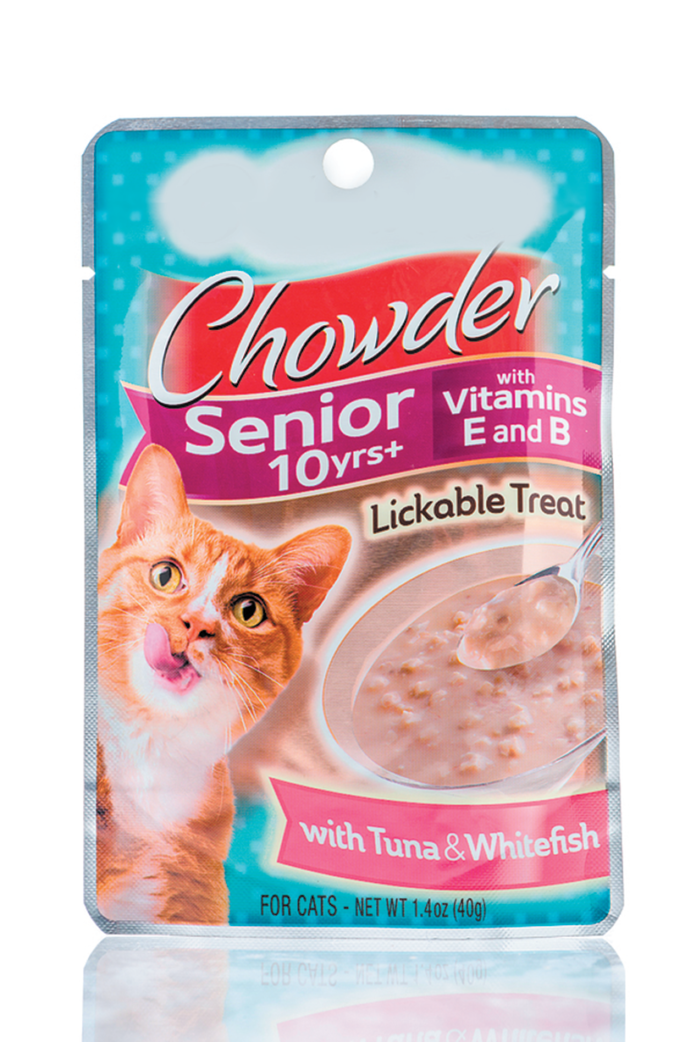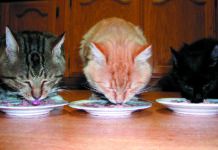It’s not just pet owners who assume that cat food labeled “senior” has a different nutritional profile than food labeled for use by adult cats in general. Veterinarians often make the same assumption, according to researchers collaborating at Oregon State University, Colorado State University, and the University of California, Davis. But that’s not the case, as the researchers discovered.
They sent 90 different cat foods for laboratory analysis — 31 labeled specifically for senior cats and 59 for all cats no matter what their stage of adulthood.
The upshot: the nutrient levels in the two groups of food were, for the most part, remarkably similar. For instance, the measure for crude protein in “senior” food averaged 94 grams per 1,000 calories, compared with 100 grams per 1,000 calories for the foods for all adult cats, no matter how old. Values were remarkably consistent for fat measures, too — an average of 46 grams per 1,000 calories in the senior food and 48 grams per 1,000 calories in the all-around adult food.
It was the same story for various minerals, including phosphorus, potassium, magnesium, potassium, and sodium. Averages for sodium were exactly the same for the two categories of food, in fact, while averages for magnesium were within a hundredth of a point.
Calories, too, were found to be consistent across the two categories, with an average of 406 per 3.5 ounces of the senior food and 413 per 3.5 ounces of the regular food.
The only ingredient that was significantly different for foods labeled “senior” was crude fiber, a measure of fiber content. It averaged 7 grams per 1,000 calories, while the regular adult cat food averaged 1.2 grams.
Interestingly, within the averages the investigators found wide variations. Calorie levels in the senior food ranged from 337 to 505, for instance, while calcium ranged from 1.9 grams per 1,000 calories to 5.7 grams per 1,000 calories. And fiber went as low as 0 grams to as many as 33.6.
Why “senior” cat foods don’t have a codified nutrition standard
Why is it that cat foods labeled “senior” have nutrient levels that are the same as or similar to the ranges of nutrient levels in other foods for adult cats, and why do the numbers vary so much?
Part of it is that the government does not regulate the use of the word “senior” on labeling, so a cat food manufacturer can use the term however it wants. There’s no legal standard. Some pet food makers even use label terms like “7+” and “11+” even though there’s no consensus about a cat’s changing vitamin, mineral, and calorie requirements as the years pass. In other words, “senior” is a marketing term, not a scientific one.
It makes sense when you consider that the evidence simply is not strong enough to support particular levels of nutrients for cats in their later years. For people, the U.S. Department of Agriculture has nutrient values for adults after age 50 and, for certain nutrients, after age 70. The research community has not caught up for our feline companions.
Before you switch to a senior food…
You might think that because senior cat foods are so similar to cat foods of young adult felines, there’s no harm in switching to a senior food once your cat starts pushing double digits. But actually, there might be. The higher levels of fiber in many foods labeled “senior” may cut down on a cat’s appetite and result in her eating fewer calories. That might be all to the good if a cat is overweight, but the researchers point out that it’s middle-aged cats who are most prone to excess weight and that some senior cats may be underweight.
In addition, some “senior” cat foods may be higher in protein and phosphorus than the food you have been feeding your pet. If your cat has undiagnosed kidney disease, higher amounts of those nutrients may place an undue burden on her already compromised kidneys.
Because changes in your older cat’s diet may actually harm rather than help (or be neutral), you should not switch the food she is eating unless you are advised to do so by her veterinarian, who will recommend a particular food based on her condition.





Really interesting. Could you do a Part II and compare foods labeled for kittens to foods labeled for adults?
Very helpful and insightful. I have been paying a premium for “senior” food!
Will you provide the name of those foods which you tested and their results?
I personally think you should take this article with a grain of salt and do your own due diligence. They don’t say what brands they tested. I’ve always fed my cats iams, so they were the first I went to when looking for senior foods. Their senior variety has MORE taurine, MORE vitamin E and glucosamine and chondroitin. Plus, I think it’s weird how in the article it says that senior foods came in at 94 gm protein compared to 100 for regular food, but then said senior foods have more protein. If there is a 6 point difference, there are VERY FEW foods with higher protein, and the 2 extra grams aren’t going to cause kidney failure.